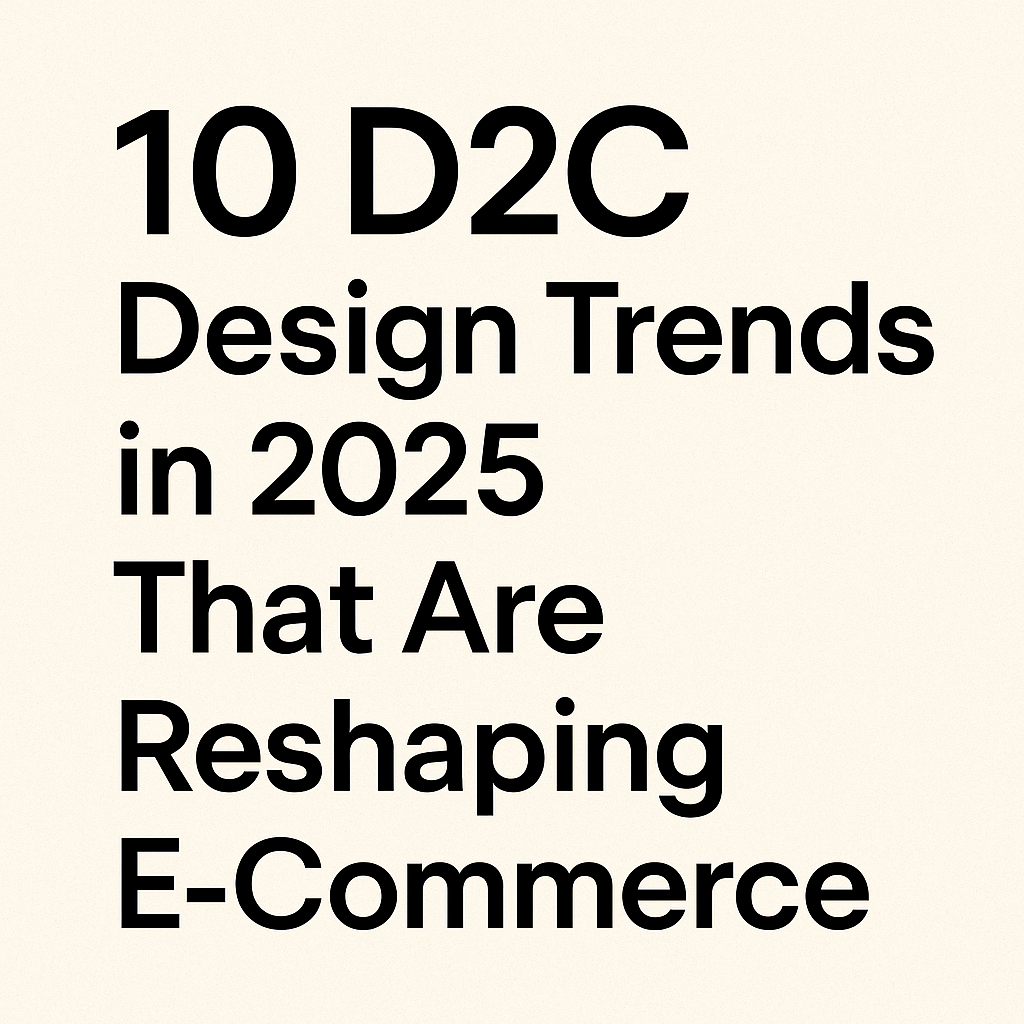
10 D2C Design Trends in 2025 That Are Reshaping E-commerce
Share
Introduction In 2025, the D2C (direct-to-consumer) ecosystem is more visually dynamic and tech-integrated than ever before. Brands aren't just building online stores — they're crafting immersive brand experiences. From AI-driven personalization to bold design choices, here are the top 10 D2C website design trends that are defining the future of digital commerce.
1. Personalized Shopping Interfaces
AI-driven interfaces that adapt based on user behavior, preferences, and past purchases are becoming the new norm. From product recommendations to layout adjustments, personalization is elevating UX and conversions. Read how AI shapes eCommerce UX.
2. Bold Typography and Maximalist Aesthetics
Subtle is out, statement-making is in. More D2C brands are using large fonts, unconventional layouts, and contrasting colors to stand out in crowded markets.
3. Mobile-First Interactive Elements
With mobile traffic exceeding 70% for most D2C brands, design is being rethought with mobile gestures, animations, and swipe-based navigation in mind. Explore mobile UX principles.
4. Sustainable and Ethical Storytelling in UX
Transparent design elements — such as impact meters, carbon offset counters, or ethical sourcing visuals — are now embedded in the user journey, not just hidden in 'About' pages.
5. Modular Design Systems
Scalable component libraries are enabling faster, more consistent brand rollouts across product pages, landing pages, and campaigns. These modular designs improve speed and uniformity.
6. 3D and Motion Graphics Integration
Whether it's spinning product views or micro-animations on hover, motion design and lightweight 3D are now accessible and widely used to increase engagement.
7. Embedded Social Proof
UGC (user-generated content), real-time reviews, and video testimonials are now deeply integrated into PDPs and checkouts, directly supporting conversion.
8. Headless and Composable Architecture
More D2C brands are shifting to headless commerce setups to gain speed, flexibility, and customizability — especially as omnichannel demands increase. Learn more about headless commerce.
9. Inclusive and Accessible Design
Designing for all — including those with visual, cognitive, or motor disabilities — is no longer optional. Accessibility is now directly tied to brand perception and SEO.
10. Storytelling Through Scroll
Long-scroll pages with immersive visuals, animations, and storytelling blocks are replacing traditional navigation. This format keeps users engaged while telling a complete brand story.
Conclusion The D2C landscape in 2025 rewards boldness, clarity, and tech-enabled creativity. Brands that embrace these design trends not only create better user experiences but also gain a competitive edge in building loyalty and increasing conversion.
Stay inspired with D2C Club — your go-to resource for the latest in D2C innovation, design, and digital excellence.
